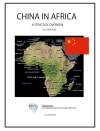 Electricity Company Of Ghana (ECG)
Electricity Company Of Ghana (ECG)
All data are collected in the Fiscal Year of 2008-2009.
Company Profile and History
ECG was incorporated in 1963 and became a limited company when shares were first sold in the firm in February 1997. However the company is still owned by the government.
The enactment of the Electricity Corporation Decree, 1967 (NLCD 125) and the repeal of the Electricity Act, established the Electricity Corporation of Ghana (ECG). For the next two decades, ECG was to remain the entity solely responsible for electricity supply and the distribution networks nationwide. In 1987, the corporation’s sphere of operation was limited to the southern parts of Ghana which also had the greater concentration of customers.
The first government-sponsored public electricity supply in the country commenced in 1914 at Sekondi. It was operated by the Railway Administration which extended supply to Takoradi in 1928. Meanwhile, the Public Works Department had commenced a limited Direct Current (DC) supply in Accra during 1922-this was immediately followed by a large Alternating Current (AC) project which commenced in 1924. A small plant consisting of three horizontal single cylinder oil-powered engines was installed in Koforidua in 1925. Also in 1926, work commenced on providing power to Kumasi.
During the period 1929-30, limited electricity supply was extended to Tamale until a new AC plant was installed in 1938. The next power station to be established was Cape Coast which came into being in 1932. Subsequent to its takeover by the Electricity Department from the Public Works and Railways on 1st April, 1947, a power station at Swedru was commissioned in 1948. This was followed by the installation of generating plants at Oda, Dunkwa and Bolgatanga in 1948.
The Tema power station was commissioned in 1956 with a 3 x 650 kW generating set. The Ho power station followed in 1957. From 1961-64, the Tema Station was extended to a maximum capacity of 35,298 kW, thus, making it the biggest single diesel-powered generating station in Africa.
Ghana’s main electricity power source, the Akosombo Dam has a total Plant capacity of 1020 megawatts. The country has constructed a 330 megawatts thermal plant in Takoradi to supplement its power supply needs. A 560 megawatts Sunon Asogli Power is under construction. The first phase of 200 megawatts has been completed. There is an ongoing project to build another 400 MW hydropower plant at the Bui dam in the Brong Ahafo region.
In Country Location
Electro/Volta House, 28th February Road, Accra, Ghana:
Telephone: +233 21 676 761
Telefax: +233 21 666 262
Services and Products
Electricity Distribution and sales to consumers in southern Ghana, namely Ashanti, Central, Greater Accra, Eastern and Volta Regions of Ghana.
Number of Employees
5,000 people
Financial Information
ECG earned revenues of $287 million in 2007 and it is estimated to reach $419 million by 2014.
Sales (cedi)

Total sales/Revenue Ratio

Market Share
The largest electricity distribution company in Ghana
Business Objective
To be among the leading electricity distribution companies in Africa in terms of quality, safety and reliability
Business Model
Government policies (from the Ministry of Energy) to a large extent still determine the company’s strategic direction. The industry has recently been opened up to allow independent generators to generate energy and put it onto the transmission network; as a result ECG now buys from the transmission companies, not the generator, and then distribute to customers.
ECG has grown and transformed to a more effective distributor largely as a result of foreign technical and financial assistance which has enabled the firm to invest in various areas to improve the quality of the network. ECG has focused on building several distribution lines and the installation of prepaid metering. The company is also focusing on becoming a regional power trader to grow the company.
The Ghana Energy Development and Access Project (GEDAP)’s development objective is to improve the reliability of electricity supply and increase the population’s access to electricity. The project has four components: sector and institutional development; transmission improvement; distribution improvement; and access expansion. ECG will be responsible for the implementation of the Distribution component and the ‘Intensification’ sub-component of the Access component and thus will be required to enter into a subsidiary loan agreement with the government.
The distribution component will support investments that aim at improving the distribution business in terms of: network upgrade for reliable supply to be measured by better voltage and reduced outage times as well as energy losses; commercial character of the business as measured by enhanced billing and increased revenues; and customer interface measured by time required to respond to complaints, customer services, etc. The project will also facilitate development of capacity in ECG in terms of technical, commercial and personnel systems and capabilities.
Ownership of Business
State-owned (100%) self regulatory monopoly with oversight by the Minister responsible for energy
Benefits Offered and Relations with Government
ECG, which was required to operate on a commercial basis was mandated to purchase electricity from the Volga River Authority (VRA-State-owned entity that is responsible for generation and transmission) in bulk for distribution. Governmental control of the electricity industry is evident in the functions of the ECG and the composition of the governing board of ECG. Among the eight-member board, three were civil servants and the chief executive of a state-owned enterprise (SOE). Thus, the Principal Secretaries or holders of the most senior civil service positions in the Ministry with responsibility for Energy, the Ministry with responsibility for Finance as well as the Chief Executive of VRA constituted an overbearing government presence on the utility’s board.
Despite Government efforts at financing the operations of the ECG, the utility continues to incur huge debts which in turn undermined its operational capability. To address the problems, the Government in 1998 undertook restructuring and recapitalization of ECG. As part of its macro-economic restructuring programme with the World Bank and IMF, the Government agreed to continue to provide the ECG with further debt relief annually up to 2008, while undertaking to secure further funding for the company to undertake critical short-term investments in the company’s distribution system. The rate customers pay is not determined by ECG. It is determined by a tariff set by the government.
The power sector has been unbundled to create an environment conducive for private sector investment. The private sector is being encouraged to diversify into thermal power and enter into power purchase agreements directly with bulk power end users such as mining companies. Over four independent power producers (IPPs) are already at different stages of power plant construction in Ghana.
Product Development
In 2009 the ECG announced that it would undertake a number of projects to combat unplanned outages. At Accra East, the company plans to create a new feeder from the Legon substation to link at Trinity College. This, according to ECG, is to create flexibility and redundancies in the power supply arrangements to customers around East Legon, Nmai Djorn, Mpeasem and surrounding areas.
The company also plans to undertake similar projects in other parts of Accra East to enable its customers at GIMPA, Teshie, Burma Camp, Spintex Road and Kisseman Junction among others to enjoy uninterrupted power supply.
The projects to be undertaken at Accra West include upgrading of week and multi-jointed cables from industrial area substation to D121 feeder to improve supply reliability to customers around North Kaneshie and industrial area. The Dansoman substation would also be upgraded to improve supply reliability to customers around Bubuashie, Dansoman, Gbegbese, Glepe and its surrounding areas.
The utility company also intends to among other things, create two new feeders from Nsawam to create flexibility and redundancies in power supply arrangements to customers at Adeiso and Dorkorchiwa.
In Ashanti West and East ECG will amongst others, create additional feeders, replace weak and undersized paper insulated cables and interconnect Ejisu and Effiduase feeders to improve power supply reliability in the area.
In the Western Region the company will upgrade conductors on the Agona-Kadadwen 33Kv HT line, re-insulate the CO8 feeder and replace strain insulators on circuit 4 to prevent breakdown. Projects to be undertaken in the Volta Region include replacement of HV woodpole on the Amedzofe 33Kv feeder with steel pylons to prevent the incidence of damage of wood poles by bush fires.




